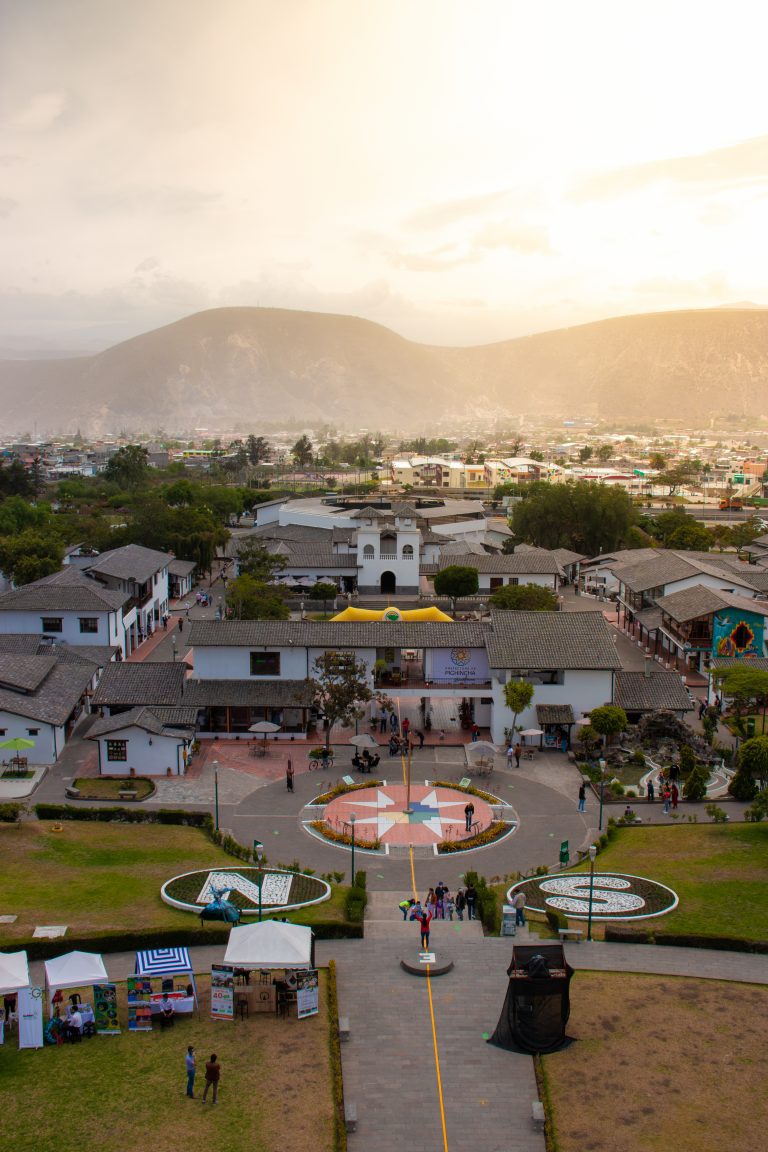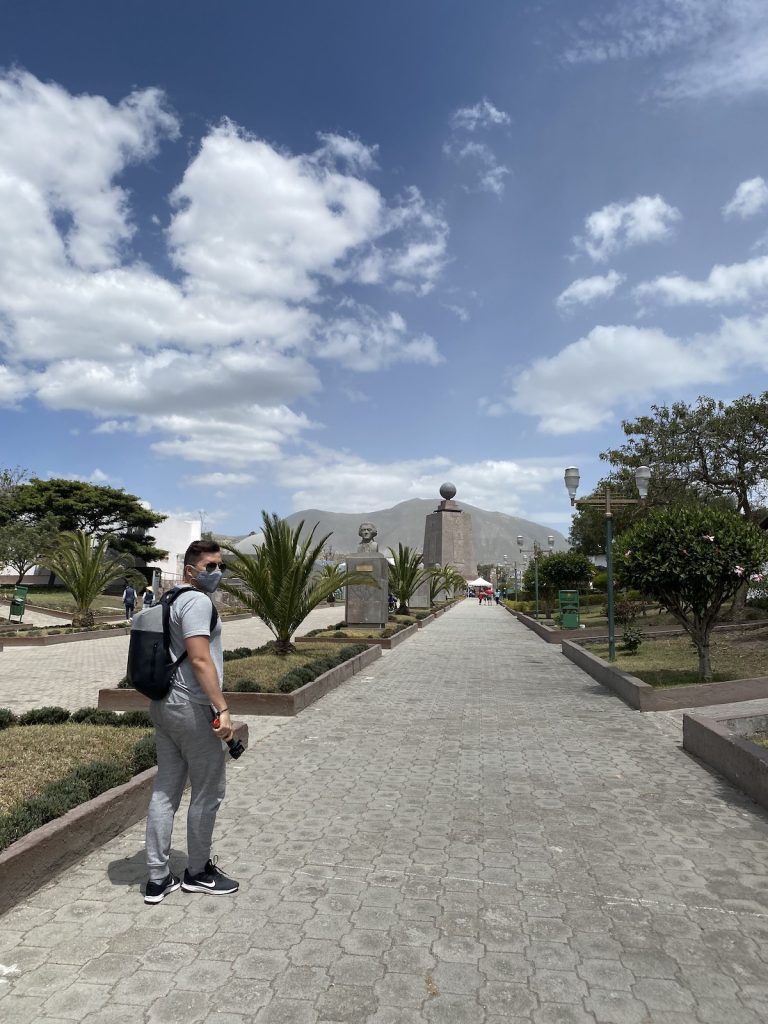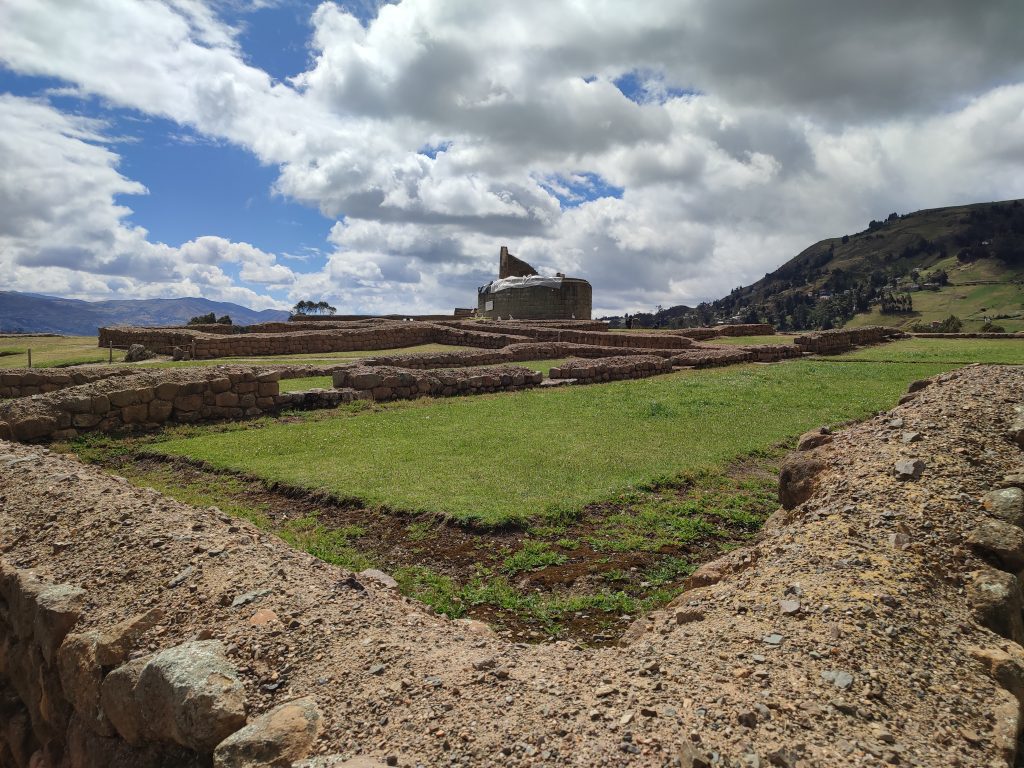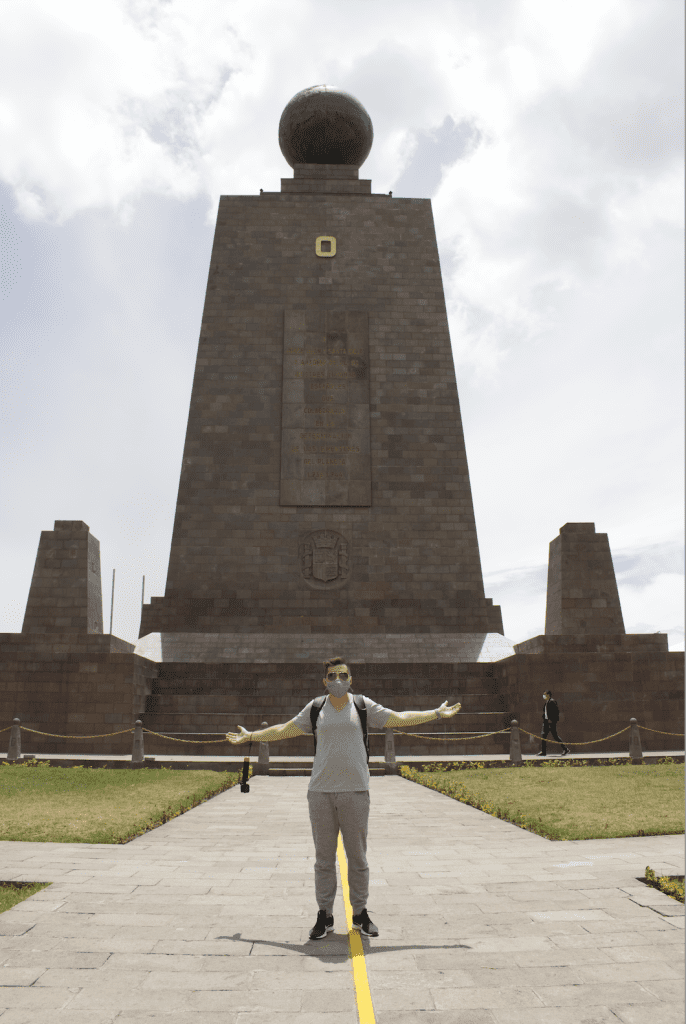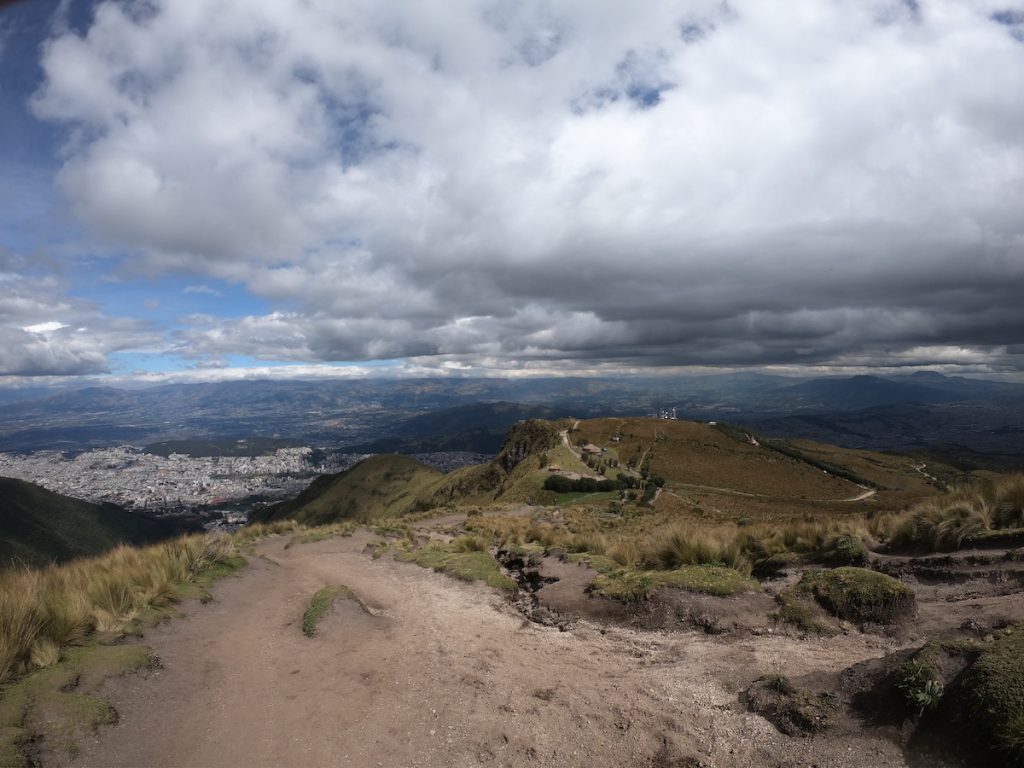The name “Ecuador” is derived from a significant geographical feature—the equator. This imaginary line, located at 0 degrees latitude, divides the Earth into the Northern and Southern Hemispheres. Ecuador, as a country, straddles the equator, making this line central to its identity and history. The equator’s influence is reflected in the country’s name and plays a vital role in its cultural and geographical significance.
When we visited both equator sites near Quito, standing in two hemispheres at once was unforgettable. Get a FREE custom itinerary from local experts who know the perfect timing and locations for these iconic experiences. Your support helps this blog and local Ecuadorian communities!
Plan perfect trip to Ecuador & Galapagos
I spent countless hours researching everything about traveling to Ecuador, and I created this blog for fellow travel enthusiasts who want the best, most reliable information. But if you want to save time, we’ve partnered with the top local agency to plan your dream trip.
The Middle of the World
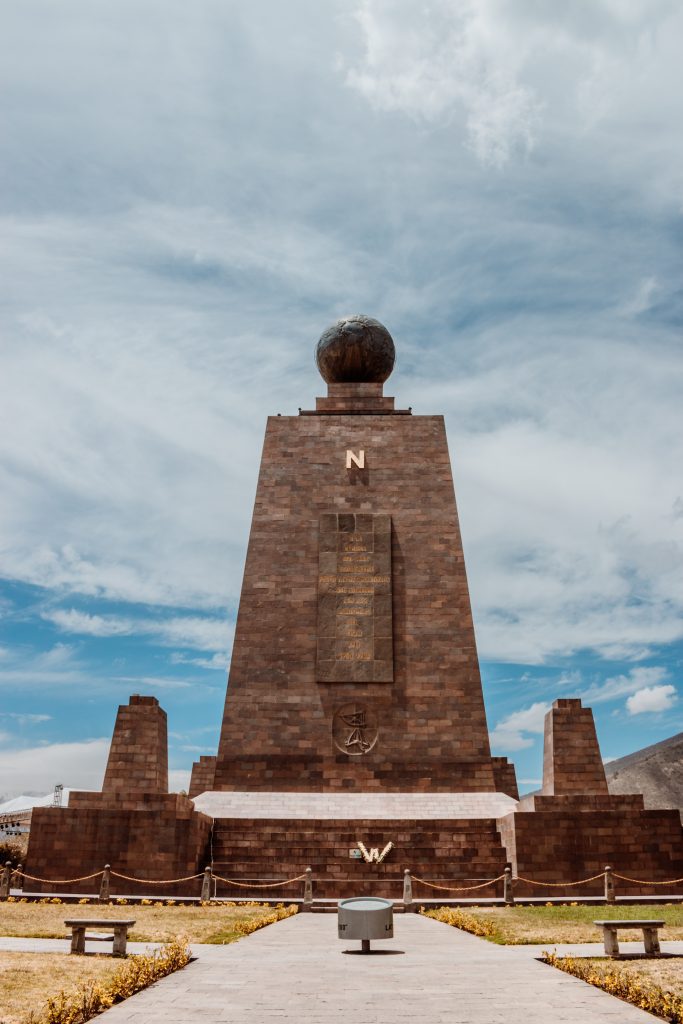
The name “Ecuador” comes from the Spanish word for the equator, highlighting the country’s pride in its central global location. This is commemorated by the famous Mitad del Mundo monument, located about 24 kilometers from the capital, Quito, in San Antonio de Pichincha.
However, despite the historical significance of the Mitad del Mundo marker, modern GPS technology has revealed an intriguing fact: the actual equator is slightly off from the monument’s location. This discovery adds a layer of curiosity for visitors, who now get to learn both about the historical and modern interpretations of Ecuador’s unique geographic position.
The Mitad del Mundo marker isn’t exactly positioned on the equator as once believed. The true location lies just a short distance away, approximately a 10-minute walk, at the Intiñan Solar Museum. This discovery adds an exciting twist to Ecuador’s identity as a country straddling the equator, offering visitors a unique opportunity to explore both the historical monument and the more precise geographical reference point. It’s a fascinating blend of tradition and modern science, making Ecuador’s association with the equator even more intriguing.
The Spanish Conquest and Colonial Era
Ecuador was originally inhabited by various indigenous communities, including the Inca and the Caras, each with their own names for the region. However, this all changed in the early 16th century when the Spanish conquistadors arrived, seeking new lands to conquer and exploit.
During this period, Spanish explorer Francisco Pizarro embarked on an expedition through the Andes Mountains and encountered the equator during his journey. In 1532, Pizarro’s expedition successfully conquered the Inca Empire, and the region became part of the Spanish colonial empire.
As Spanish colonization progressed, the area began to be referred to as “Ecuador,” reflecting its location along the equatorial line. The name was a direct nod to the region’s unique geographical position, shaping its identity within the Spanish empire.
The Importance of Latitude Zero
The equator’s significance goes far beyond its role as a geographical line; it holds crucial astronomical and navigational importance. Before the development of modern technology, accurate measurement of latitude was essential for maritime navigation and determining one’s position on the globe. The equator, being the most easily accessible and stable line of latitude, became a key reference point for sailors and explorers, helping them navigate vast oceans and chart their courses with more precision. Its role as a reliable guide made it indispensable in the age of exploration.
French Geodesic Mission – Measuring the Earth
The exact location of the equator wasn’t accurately known until the 18th century. In the mid-1700s, a group of French scientists led the Geodesic Mission to what is now Ecuador to determine the Earth’s true shape and size.
Guided by renowned astronomer Charles Marie de La Condamine and other notable scientists, the mission conducted extensive measurements and calculations around the city of Quito.
In 1735, the Geodesic Mission carried out a landmark experiment at the equator, pinpointing its location with remarkable precision. This scientific endeavor, which concluded in 1739, not only helped confirm the shape of the Earth but also solidified Ecuador’s association with the equator, contributing to the country’s identity and its eventual naming.
Looking back, I wish I’d known about both the historical monument and true GPS equator location before visiting. Save time with a FREE personalized itinerary from local experts who’ll help you discover all of Ecuador’s remarkable sites. Your quote request supports this blog and local Ecuadorian businesses!
Modern-Day Ecuador

Now officially known as the Republic of Ecuador, the country gained independence from Spanish rule on May 24, 1822, under the leadership of South American revolutionary hero Simón Bolívar.
After gaining independence, the name “Ecuador” was retained, symbolizing the nation’s historical connection to the equator. This connection continues to be a source of pride for Ecuadorians and a point of interest for visitors, as the equator remains central to the country’s identity and global significance.

Planning trip to Ecuador?
My wife and I rented a car for 15 days and traveled from the northern part of Ecuador to the south, visiting amazing cities like Quito, Otavalo, Baños, Cuenca, and Guayaquil. Along the way, we explored iconic places such as Cotopaxi National Park, Quilotoa Lake, and many more breathtaking destinations.
Not many blogs cover traveling in Ecuador in detail, so I spent nearly three weeks creating this comprehensive Ecuador travel guide based on our trip. It’s packed with everything you need to know, and honestly, I consider it the best free travel guide about Ecuador out there.
If you’re planning a trip to Ecuador, don’t forget to use my link for discounted hotel prices through Booking.com. It’s a great way to support my blog while saving money on your accommodations!
Conclusion
Ecuador’s name, derived from the Spanish word for the equator, pays tribute to its unique geographical location. As a nation straddling this significant line, Ecuador proudly celebrates its position with the iconic Mitad del Mundo monument. Although modern GPS technology has revealed a slight deviation in the monument’s location, the allure of standing on the equator remains, drawing travelers from across the globe to experience this remarkable spot.
Today, Ecuador is a vibrant country with a rich cultural heritage and stunning natural wonders, attracting adventurers from all corners of the world. Whether exploring the Amazon rainforest, the Andes Mountains, or the Galapagos Islands, Ecuador offers an unforgettable experience. Plan your trip and discover the magic of being in two hemispheres at once!
Plan perfect trip to Ecuador & Galapagos
I spent countless hours researching everything about traveling to Ecuador, and I created this blog for fellow travel enthusiasts who want the best, most reliable information. But if you want to save time, we’ve partnered with the top local agency to plan your dream trip.

